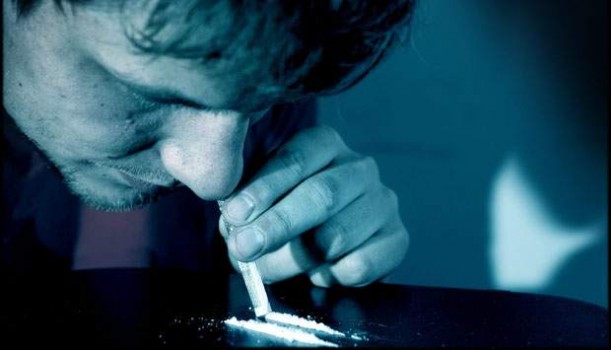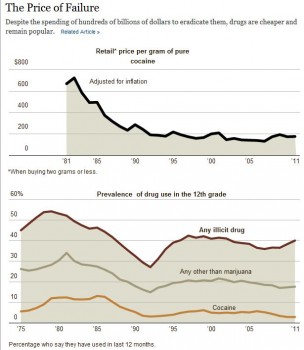Source: Denver Rocky Mountain News (CO)
US CO: ‘No-Knock’ Raids Not Colorblind
Author: Kevin Flynn, Lou Kilzer, Staff Writers
| More than 82 percent of Denver’s “no-knock” raids in 1999 targeted minority residents.A Denver Rocky Mountain News analysis of 178 no-knock warrants issued last year showed that white suspects were targeted in only 14 percent of the cases. In slightly more than 3 percent of the searches, the race of the suspect was not disclosed.
Denver’s population is 56 percent white and 44 percent minority, according to 1997 Census estimates. The disparity has some community activists saying, “I told you so.” “Is it an abuse of power that basically has been overlooked?” asked Rev. Gill Ford, president of the Colorado NAACP. “I think the numbers are demonstrating that it is.” “The statistic is not surprising,” said LeRoy Lemos, spokesman for a committee seeking changes in police no-knock policies. “It’s something we’ve been saying for a long time.” Mayor Wellington Webb and senior police administrators declined to comment on the News’ findings. The records analyzed by the News also indicate that the changes activists are seeking might already be taking place. Since the fatal shooting of Mexican national Ismael Mena in a botched no-knock raid Sept. 29, the number of such search warrants has plummeted. From November through January, police obtained search warrants for 23 no-knock raids, compared to 64 such warrants granted in the same period a year earlier. Police would not comment on the decline. Police have been under intense criticism since the killing of Mena, who lived on the second floor of a two-story house at 3738 High St. Although officials knew almost immediately after the shooting that they had raided the wrong house, they didn’t acknowledge it publicly for two months. On Dec. 7, they raided the house next door at 3742 High St, which had been the original target. They recovered three small bags of crack and suspected cocaine. They also arrested two people, including a 13-year-old boy who informants said had been selling crack. In the aftermath of the Mena raid, a Denver police officer said she felt pressured to fabricate reports about trouble at his house. Jefferson County District Attorney Dave Thomas, acting as special prosecutor in the investigation, found no evidence of wrongdoing by her supervisors. But two of them, including the District 2 commander, Capt. Marco Vasquez, were transferred. Thomas filed perjury charges against Joseph Bini, the officer who filed the sworn affidavit for the search at Mena’s house. The charges accuse Bini of “unlawfully and knowingly” lying on the Mena affidavit. Thomas also cleared the SWAT officers who participated in the raid and shot Mena. Police Chief Tom Sanchez resigned under pressure four days later. No-knock raids are a key police weapon in the war against drugs. Denver District Attorney Bill Ritter, who is independent of the city administration, said the police practice of targeting suspected crack houses in minority neighborhoods was sparked by residents in the same neighborhoods more than six years ago. In the wake of a series of gang-related drive-by shootings in what came to be called the Summer of Violence in 1993, citizens at Webb’s Safe City Summit demanded a police crackdown on drug dealers in their neighborhoods. “This is very much in response to the community concern that was voiced in 1993,” said Ritter, who attended many of the sessions. The NAACP’s Ford said that no-knock raids targeting major drug dealers are a legitimate police response. But he said that far too many such raids are aimed at “nickel-and-dime buys” involving low-level drug users and dealers. Ritter said police might be more cautious now in the aftermath of the Mena killing, accounting for the decline in no-knock raids. Ritter is on a panel with Chief Denver County Judge Robert Patterson, and Safety Manager Butch Montoya that is reviewing procedures for no-knock raid policies. Court records for 1999 show that many of the raids were based on the time-tested and legal practice of “controlled buys” of narcotics by a trusted police informant — usually a drug user who has agreed to cooperate. As a result, many of the raids — especially those initiated by Bini and other street patrol officers — are based on $20 or $40 crack buys. Often, the records showed, the amount of drugs seized in the raids was less than police expected to find. During the investigation leading to a raid in August in the 3400 block of Humboldt Street — a house also raided in May — Bini and his partner, Dan Andrews, watched from a nearby porch as people entered the house for a few minutes then left. One suspect was followed, found in possession of crack cocaine and arrested. On that basis, a no-knock raid was authorized for the next day. According to court documents, police recovered a VCR, two CD players and some hats — but no drugs. “Would a $20 rock of coke suffice to use a no-knock in Cherry Creek?” Ford asked rhetorically, citing one of the city’s wealthiest neighborhoods. “I would hope for a total reappraisal” of the raid policy, Ford added. “I would also hope that the district attorney’s office as well as the judges would expect more substance than that. “Probable cause is one of the broadest areas that you can look at. And it really becomes a point of discretion, and that discretion can be abused. And that appears to be what’s going on here.” Mark Silverstein, legal director of the American Civil Liberties Union of Colorado, said the level of evidence police presented in requesting some of the search warrants was surprisingly low. Police raided a house on Josephine Street although the search warrant affidavit, written by Bini’s partner Andrews, did not claim that drugs were in the house. In the sworn statement, Bini, Andrews and officer Kelly Ohu took an informant to the area to make a controlled buy. The informant met a man in front of the house then went behind the house. Later, the informant said the transaction occurred behind the house, out of sight of the officers. “The police have no business taking this request to the judge. The DA has no business approving it, and the judge has no business signing it on that kind of affidavit,” Silverstein said. Ritter said that current policies are stricter than the law requires. “I think there is a real concern that prior to our committee looking at these things and giving direction, they have changed their practices and become more cautious,” Ritter said. “If we’re going to impose requirements on the police that are stricter than the legal requirements, that’s the question we have to answer as a city,” he said. Although Webb declined to discuss the issue with the News last week, he previously has said he wants police to continue to include no-knock raids in their arsenal of crime-fighting tools. Ritter indicated that one question the review panel will examine is the adequacy of police training in preparing search warrants. David Bruno, Bini’s attorney, said that Bini received no training in preparing search warrant affidavits. Bruno said Bini was teaching other officers his practices despite having no training himself. Assistant District Attorney Chuck Lepley has taught search warrant classes at the police academy but said most cops hone their skills on the streets. “In practice, whatever training they get in the academy moves into the practical environment, where they pick up things from other officers,” Lepley said. “If those other officers have bad habits, that’ll get picked up.” The News’ analysis of Denver’s 178 no-knock raids shows that 80 percent of those initiated by veteran narcotics detectives resulted in substantial recovery of illegal drugs. Sixty-four percent of those raids initiated by street officers such as Bini found substantial amounts, the News analysis showed. Lepley said that experienced narcotics detectives generally prepare authoritative search warrant affidavits. Lepley singled out Detective Mike Gassman as someone who routinely double-checks confidential informants’ information. Gassman’s affidavits show extensive corroboration, such as driver’s license checks, utility records and other methods to verify to a judge that the target of the investigation, in fact, lives in the house police want to raid. Lemos, spokesman for the Justice for Mena Committee, said it isn’t true that police target minorities because most drug trafficking involves them. “It’s very clear that the drug problem in America is not an inner-city problem alone but a problem that also plagues suburbia,” he said. “The difference is the enforcement. “White Americans would not stand for police to enforce no-knock warrants in their communities,” he said. “Sadly,” Ford added, “we don’t monitor the police, and we just simply trust them to do the right thing. I think we’re finding that that trust is being misplaced.” Of the five raids Bini initiated for which an inventory of seized property was returned, no drugs were found in two of them, including the Mena raid. The other three raids found small amounts typical of what a user, rather than a dealer, would have. One person who says she was a victim of an unfounded Bini no-knock warrant was Linda Smith, a reading teacher who has lived in her north Denver home for 16 years. She says that first targeted her 26-year-old daughter’s house then turned on her when her daughter came to stay with her. In the spring, black-clad SWAT team members burst into her home with rifles and guns drawn, shouting commands. Smith said the house was crowded with relatives, including three grandchildren ages 1 to 9. Smith said the children burst into tears when one leader of the SWAT team called males in the family “roaches.” She said no drugs were found. However, the police, she said, threatened to seize her home. The search warrant for Smith’s home did not include a required follow-up inventory that lists the items, if any, that were seized. As a result, the News could not verify Smith’s version of events. Contact Kevin Flynn at (303) 892-5247 or flynnk@RockyMountainNews.com . Contact Lou Kilzer at (303) 892-2644 or kilzerl@RockyMountainNews.com . MAP posted-by: Doc-Hawk |





